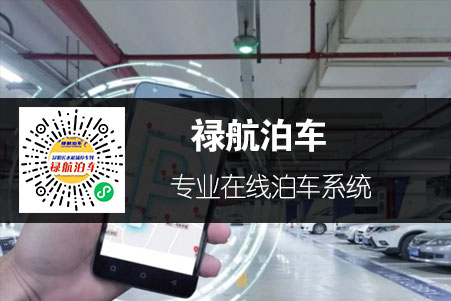qemu
發表時(shí)間:2020-11-13
發布人(rén):融晨科技
浏覽次數:64
Linux客戶機 virtio設備初始化
virtio設備物理上(shàng)連接在(zài)pci物理總線上(shàng),邏輯上(shàng)連接在(zài)virtio虛拟總線。做爲(wéi / wèi)pci設備便于(yú)資源分配與配置,邏輯設備模型中,便于(yú)管理與組織。
1.qemu-kvm提供的(de)virtio pci設備
virtio-blk(硬盤),virtio-net(網絡),virtio-balloon(氣球)等pci設備,這(zhè)些設備連接在(zài)pci總線上(shàng)。代碼位于(yú)qemu: hw/virtio-pci.c
static PCIDeviceInfo virtio_info[] = {
{
.qdev.name = "virtio-blk-pci",
},{
.qdev.name = "virtio-net-pci",
},{
.qdev.name = "virtio-serial-pci",
},{
.qdev.name = "virtio-balloon-pci",
},
}
static void virtio_pci_register_devices(void)
{
pci_qdev_register_many(virtio_info);
}
2.客戶機PCI設備進行枚舉和(hé / huò)資源分配
當Linux客戶機系統啓動時(shí),對PCI設備進行枚舉和(hé / huò)資源分配(配置PCI的(de)配置空間),通常由BIOS完成。不(bù)過對Linux系統提供方式,一種由BIOS實現,另一種自己實現枚舉和(hé / huò)資源分配功能。代碼位于(yú)kernel:arch/x86/pci/init.c
static __init int pci_arch_init(void)
{
#ifdef CONFIG_PCI_DIRECT
int type = 0;
type = pci_direct_probe();
#endif
#endif
#ifdef CONFIG_PCI_BIOS
pci_pcbios_init();
#endif
}
真正設備枚舉和(hé / huò)資源分配由這(zhè)裏開始
static int __init pci_legacy_init(void)
{
printk("PCI: Probing PCI hardware\n");
pci_root_bus = pcibios_scan_root(0);
if (pci_root_bus)
pci_bus_add_devices(pci_root_bus);
return 0;
}
pcibios_scan_root()---->pci_scan_bus_parented()---->pci_scan_child_bus()--->pci_scan_slot()--->pci_scan_single_device()----->pci_device_add()
将PCI總線上(shàng)的(de)設備添加到(dào)鏈表
void pci_device_add(struct pci_dev *dev, struct pci_bus *bus)
{
/*
* Add the device to our list of discovered devices
* and the bus list for fixup functions, etc.
*/
down_write(&pci_bus_sem);
list_add_tail(&dev->bus_list, &bus->devices);
up_write(&pci_bus_sem);
}
上(shàng)述過程執行完成,在(zài)/sys/devices/pci0000:00目錄下,創建virtio pci設備。并且在(zài)/sys/bus/pci/devices/目錄下,創建相應對于(yú)pci設備的(de)符号連接,同時(shí)在(zài)/sys/bus/pci/drivers/目錄下,創建virtio-pci目錄,目錄下存在(zài)支持設備符号連接文件。
3.virtio總線定義與注冊,virtio總線爲(wéi / wèi)虛拟的(de)總線,目的(de)爲(wéi / wèi)了(le/liǎo)設備管理與組織需要(yào / yāo)。代碼位于(yú):
static struct bus_type virtio_bus = {
.name = "virtio",
.match = virtio_dev_match,
.dev_attrs = virtio_dev_attrs,
.uevent = virtio_uevent,
.probe = virtio_dev_probe,
.remove = virtio_dev_remove,
};
static int virtio_init(void)
{
if (bus_register(&virtio_bus) != 0)
panic("virtio bus registration failed");
return 0;
}
上(shàng)述注冊函數調用執行完成,在(zài)/sys/bus/目錄下,創建了(le/liǎo)一個(gè)新的(de)目錄virtio,在(zài)該目錄下同時(shí)創建了(le/liǎo)兩個(gè)文件夾爲(wéi / wèi)devices和(hé / huò)drivers。表示創建virtio總線,總線支持設備與驅動devices和(hé / huò)drivers目錄下。
4. virtio-pci設備驅動加載
static struct pci_driver virtio_pci_driver = {
.name = "virtio-pci",
.id_table = virtio_pci_id_table,
.probe = virtio_pci_probe,
.remove = virtio_pci_remove,
#ifdef CONFIG_PM
.suspend = virtio_pci_suspend,
.resume = virtio_pci_resume,
#endif
};
static int __init virtio_pci_init(void)
{
virtio_pci_root = root_device_register("virtio-pci");
err = pci_register_driver(&virtio_pci_driver);
return err;
}
上(shàng)述注冊函數調用執行完成,在(zài)/sys/bus/pci/drivers和(hé / huò)/sys/devices目錄下創建了(le/liǎo)virtio-pci文件夾
5,virtio總線子(zǐ)設備注冊
上(shàng)面步驟2,對PCI設備進行枚舉和(hé / huò)資源分配中介紹了(le/liǎo),枚舉的(de)設備,已經關聯到(dào)總線鏈表中。對函數調用pci_register_driver(&virtio_pci_driver)就(jiù)是(shì)對鏈表的(de)每一個(gè)pci設備進行探測,該驅動是(shì)否支持該設備,如果支持進,調用驅動probe函數,完成啓用該pci設備,同時(shí)在(zài)virtio總線進行注冊設備。
bus_for_each_dev(drv->bus, NULL, drv, __driver_attach);
if (drv->probe) {
ret = drv->probe(dev);
}
static int __devinit virtio_pci_probe(struct pci_dev *pci_dev,
const struct pci_device_id *id)
{
struct virtio_pci_device *vp_dev;
int err;
/* We only own devices >= 0x1000 and <= 0x103f: leave the rest. */
if (pci_dev->device < 0x1000 || pci_dev->device > 0x103f)
return -ENODEV;
/* allocate our structure and fill it out */
vp_dev = kzalloc(sizeof(struct virtio_pci_device), GFP_KERNEL);
if (vp_dev == NULL)
return -ENOMEM;
vp_dev->vdev.dev.parent = virtio_pci_root;
vp_dev->vdev.dev.release = virtio_pci_release_dev;
vp_dev->vdev.config = &virtio_pci_config_ops;
vp_dev->pci_dev = pci_dev;
INIT_LIST_HEAD(&vp_dev->virtqueues);
spin_lock_init(&vp_dev->lock);
/* Disable MSI/MSIX to bring device to a known good state. */
pci_msi_off(pci_dev);
/* enable the device */
err = pci_enable_device(pci_dev);
if (err)
goto out;
err = pci_request_regions(pci_dev, "virtio-pci");
if (err)
goto out_enable_device;
vp_dev->ioaddr = pci_iomap(pci_dev, 0, 0);
if (vp_dev->ioaddr == NULL)
goto out_req_regions;
pci_set_drvdata(pci_dev, vp_dev);
/* we use the subsystem vendor/device id as the virtio vendor/device
* id. this allows us to use the same PCI vendor/device id for all
* virtio devices and to identify the particular virtio driver by
* the subsytem ids */
vp_dev->vdev.id.vendor = pci_dev->subsystem_vendor;
vp_dev->vdev.id.device = pci_dev->subsystem_device;
/* finally register the virtio device */
err = register_virtio_device(&vp_dev->vdev);
if (err)
goto out_set_drvdata;
return 0;
}
上(shàng)述注冊函數調用執行完成,/sys/devices/virtio-pci/創建相應子(zǐ)設備{virtio1,virtio2,virtio3},同時(shí)在(zài)/sys/bus/virtio/devices下面創建三個(gè)符号連接文件{virtio1,virtio2,virtio3}
6. virtio總線子(zǐ)設備驅動注冊。
當virtio總線進行注冊設備register_virtio_device,将調用virtio總線的(de)probe函數:virtio_dev_probe()。該函數遍曆驅動,找到(dào)支持驅動關聯到(dào)該設備。
register_virtio_device()--->bus_probe_device()---->device_attach();
bus_for_each_drv(dev->bus, NULL, dev, __device_attach);
if (dev->bus->probe) {
ret = dev->bus->probe(dev);
}
static int virtio_dev_probe(struct device *_d)
{
int err, i;
struct virtio_device *dev = container_of(_d,struct virtio_device,dev);
struct virtio_driver *drv = container_of(dev->dev.driver,
struct virtio_driver, driver);
u32 device_features;
/* We have a driver! */
add_status(dev, VIRTIO_CONFIG_S_DRIVER);
/* Figure out what features the device supports. */
device_features = dev->config->get_features(dev);
/* Features supported by both device and driver into dev->features. */
memset(dev->features, 0, sizeof(dev->features));
for (i = 0; i < drv->feature_table_size; i++) {
unsigned int f = drv->feature_table[i];
BUG_ON(f >= 32);
if (device_features & (1 << f))
set_bit(f, dev->features);
}
/* Transport features always preserved to pass to finalize_features. */
for (i = VIRTIO_TRANSPORT_F_START; i < VIRTIO_TRANSPORT_F_END; i++)
if (device_features & (1 << i))
set_bit(i, dev->features);
dev->config->finalize_features(dev);
err = drv->probe(dev);
if (err)
add_status(dev, VIRTIO_CONFIG_S_FAILED);
else
add_status(dev, VIRTIO_CONFIG_S_DRIVER_OK);
return err;
}
//virtio_balloon設備驅動實例
static struct virtio_driver virtio_balloon_driver = {
.feature_table = features,
.feature_table_size = ARRAY_SIZE(features),
.driver.name = KBUILD_MODNAME,
.driver.owner = THIS_MODULE,
.id_table = id_table,
.probe = virtballoon_probe,
.remove = __devexit_p(virtballoon_remove),
.config_changed = virtballoon_changed,
};
static int __init init(void)
{
return register_virtio_driver(&virtio_balloon_driver);
}
同時(shí)在(zài)/sys/bus/virtio/drivers下面創建三個(gè)文件{virtio_balloon,virtio_blk,virtio_console},并且與設備發生關聯
//////////////////////////////
熱插拔事件的(de)産生往往是(shì)由總線驅動級的(de)邏輯處理,所以(yǐ)總線一般提供事件發送函數。例如virtio總線事件函數virtio_uevent。
static int virtio_uevent(struct device *_dv, struct kobj_uevent_env *env)
{
struct virtio_device *dev = container_of(_dv,struct virtio_device,dev);
return add_uevent_var(env, "MODALIAS=virtio:d%08Xv%08X",
dev->id.device, dev->id.vendor);
}
下面函數工作流程如下:
1.由設備對象往上(shàng)查找,直到(dào)找到(dào)包含kset的(de)kobject(總線包含着kset)
2.判斷kobject對象是(shì)否提供filter,name,uevent函數,如果提供,調用它。
3.分配一個(gè)kobj_uevent_env,并開始填充env環境變量:ACTION,DEVPATH,SUBSYSTEM,SEQNUM,MODALIAS
4.通過netlink發送到(dào)用戶空間
register_virtio_device()---->device_register()---->device_add()---->kobject_uevent()---->kobject_uevent_env()
int kobject_uevent_env(struct kobject *kobj, enum kobject_action action,
char *envp_ext[])
{
/* search the kset we belong to */
top_kobj = kobj;
while (!top_kobj->kset && top_kobj->parent)
top_kobj = top_kobj->parent;
kset = top_kobj->kset;
uevent_ops = kset->uevent_ops;
/* skip the event, if the filter returns zero. */
if (uevent_ops && uevent_ops->filter)
if (!uevent_ops->filter(kset, kobj)) {
pr_debug("kobject: '%s' (%p): %s: filter function "
"caused the event to drop!\n",
kobject_name(kobj), kobj, __func__);
return 0;
}
/* originating subsystem */
if (uevent_ops && uevent_ops->name)
subsystem = uevent_ops->name(kset, kobj);
else
subsystem = kobject_name(&kset->kobj);
/* environment buffer */
env = kzalloc(sizeof(struct kobj_uevent_env), GFP_KERNEL);
if (!env)
return -ENOMEM;
/* complete object path */
devpath = kobject_get_path(kobj, GFP_KERNEL);
if (!devpath) {
retval = -ENOENT;
goto exit;
}
/* default keys */
retval = add_uevent_var(env, "ACTION=%s", action_string);
if (retval)
goto exit;
retval = add_uevent_var(env, "DEVPATH=%s", devpath);
if (retval)
goto exit;
retval = add_uevent_var(env, "SUBSYSTEM=%s", subsystem);
if (retval)
goto exit;
/* keys passed in from the caller */
if (envp_ext) {
for (i = 0; envp_ext[i]; i++) {
retval = add_uevent_var(env, "%s", envp_ext[i]);
if (retval)
goto exit;
}
}
/* let the kset specific function add its stuff */
if (uevent_ops && uevent_ops->uevent) {
retval = uevent_ops->uevent(kset, kobj, env);
if (retval) {
pr_debug("kobject: '%s' (%p): %s: uevent() returned "
"%d\n", kobject_name(kobj), kobj,
__func__, retval);
goto exit;
}
}
/*
* Mark "add" and "remove" events in the object to ensure proper
* events to userspace during automatic cleanup. If the object did
* send an "add" event, "remove" will automatically generated by
* the core, if not already done by the caller.
*/
if (action == KOBJ_ADD)
kobj->state_add_uevent_sent = 1;
else if (action == KOBJ_REMOVE)
kobj->state_remove_uevent_sent = 1;
/* we will send an event, so request a new sequence number */
spin_lock(&sequence_lock);
seq = ++uevent_seqnum;
spin_unlock(&sequence_lock);
retval = add_uevent_var(env, "SEQNUM=%llu", (unsigned long long)seq);
if (retval)
goto exit;
/* send netlink message */
if (uevent_sock) {
struct sk_buff *skb;
size_t len;
/* allocate message with the maximum possible size */
len = strlen(action_string) + strlen(devpath) + 2;
skb = alloc_skb(len + env->buflen, GFP_KERNEL);
if (skb) {
char *scratch;
/* add header */
scratch = skb_put(skb, len);
sprintf(scratch, "%s@%s", action_string, devpath);
/* copy keys to our continuous event payload buffer */
for (i = 0; i < env->envp_idx; i++) {
len = strlen(env->envp[i]) + 1;
scratch = skb_put(skb, len);
strcpy(scratch, env->envp[i]);
}
NETLINK_CB(skb).dst_group = 1;
retval = netlink_broadcast(uevent_sock, skb, 0, 1,
GFP_KERNEL);
/* ENOBUFS should be handled in userspace */
if (retval == -ENOBUFS)
retval = 0;
} else
retval = -ENOMEM;
}
用戶空間
當發送信息達到(dào)了(le/liǎo)用戶空間,用戶空間的(de)udevd守護進程,接受到(dào)此信息。在(zài)udev規則文件裏匹配,相應的(de)規則。
virtio設備物理上(shàng)連接在(zài)pci物理總線上(shàng),邏輯上(shàng)連接在(zài)virtio虛拟總線。做爲(wéi / wèi)pci設備便于(yú)資源分配與配置,邏輯設備模型中,便于(yú)管理與組織。
1.qemu-kvm提供的(de)virtio pci設備
virtio-blk(硬盤),virtio-net(網絡),virtio-balloon(氣球)等pci設備,這(zhè)些設備連接在(zài)pci總線上(shàng)。代碼位于(yú)qemu: hw/virtio-pci.c
static PCIDeviceInfo virtio_info[] = {
{
.qdev.name = "virtio-blk-pci",
},{
.qdev.name = "virtio-net-pci",
},{
.qdev.name = "virtio-serial-pci",
},{
.qdev.name = "virtio-balloon-pci",
},
}
static void virtio_pci_register_devices(void)
{
pci_qdev_register_many(virtio_info);
}
2.客戶機PCI設備進行枚舉和(hé / huò)資源分配
當Linux客戶機系統啓動時(shí),對PCI設備進行枚舉和(hé / huò)資源分配(配置PCI的(de)配置空間),通常由BIOS完成。不(bù)過對Linux系統提供方式,一種由BIOS實現,另一種自己實現枚舉和(hé / huò)資源分配功能。代碼位于(yú)kernel:arch/x86/pci/init.c
static __init int pci_arch_init(void)
{
#ifdef CONFIG_PCI_DIRECT
int type = 0;
type = pci_direct_probe();
#endif
#endif
#ifdef CONFIG_PCI_BIOS
pci_pcbios_init();
#endif
}
真正設備枚舉和(hé / huò)資源分配由這(zhè)裏開始
static int __init pci_legacy_init(void)
{
printk("PCI: Probing PCI hardware\n");
pci_root_bus = pcibios_scan_root(0);
if (pci_root_bus)
pci_bus_add_devices(pci_root_bus);
return 0;
}
pcibios_scan_root()---->pci_scan_bus_parented()---->pci_scan_child_bus()--->pci_scan_slot()--->pci_scan_single_device()----->pci_device_add()
将PCI總線上(shàng)的(de)設備添加到(dào)鏈表
void pci_device_add(struct pci_dev *dev, struct pci_bus *bus)
{
/*
* Add the device to our list of discovered devices
* and the bus list for fixup functions, etc.
*/
down_write(&pci_bus_sem);
list_add_tail(&dev->bus_list, &bus->devices);
up_write(&pci_bus_sem);
}
上(shàng)述過程執行完成,在(zài)/sys/devices/pci0000:00目錄下,創建virtio pci設備。并且在(zài)/sys/bus/pci/devices/目錄下,創建相應對于(yú)pci設備的(de)符号連接,同時(shí)在(zài)/sys/bus/pci/drivers/目錄下,創建virtio-pci目錄,目錄下存在(zài)支持設備符号連接文件。
3.virtio總線定義與注冊,virtio總線爲(wéi / wèi)虛拟的(de)總線,目的(de)爲(wéi / wèi)了(le/liǎo)設備管理與組織需要(yào / yāo)。代碼位于(yú):
static struct bus_type virtio_bus = {
.name = "virtio",
.match = virtio_dev_match,
.dev_attrs = virtio_dev_attrs,
.uevent = virtio_uevent,
.probe = virtio_dev_probe,
.remove = virtio_dev_remove,
};
static int virtio_init(void)
{
if (bus_register(&virtio_bus) != 0)
panic("virtio bus registration failed");
return 0;
}
上(shàng)述注冊函數調用執行完成,在(zài)/sys/bus/目錄下,創建了(le/liǎo)一個(gè)新的(de)目錄virtio,在(zài)該目錄下同時(shí)創建了(le/liǎo)兩個(gè)文件夾爲(wéi / wèi)devices和(hé / huò)drivers。表示創建virtio總線,總線支持設備與驅動devices和(hé / huò)drivers目錄下。
4. virtio-pci設備驅動加載
static struct pci_driver virtio_pci_driver = {
.name = "virtio-pci",
.id_table = virtio_pci_id_table,
.probe = virtio_pci_probe,
.remove = virtio_pci_remove,
#ifdef CONFIG_PM
.suspend = virtio_pci_suspend,
.resume = virtio_pci_resume,
#endif
};
static int __init virtio_pci_init(void)
{
virtio_pci_root = root_device_register("virtio-pci");
err = pci_register_driver(&virtio_pci_driver);
return err;
}
上(shàng)述注冊函數調用執行完成,在(zài)/sys/bus/pci/drivers和(hé / huò)/sys/devices目錄下創建了(le/liǎo)virtio-pci文件夾
5,virtio總線子(zǐ)設備注冊
上(shàng)面步驟2,對PCI設備進行枚舉和(hé / huò)資源分配中介紹了(le/liǎo),枚舉的(de)設備,已經關聯到(dào)總線鏈表中。對函數調用pci_register_driver(&virtio_pci_driver)就(jiù)是(shì)對鏈表的(de)每一個(gè)pci設備進行探測,該驅動是(shì)否支持該設備,如果支持進,調用驅動probe函數,完成啓用該pci設備,同時(shí)在(zài)virtio總線進行注冊設備。
bus_for_each_dev(drv->bus, NULL, drv, __driver_attach);
if (drv->probe) {
ret = drv->probe(dev);
}
static int __devinit virtio_pci_probe(struct pci_dev *pci_dev,
const struct pci_device_id *id)
{
struct virtio_pci_device *vp_dev;
int err;
/* We only own devices >= 0x1000 and <= 0x103f: leave the rest. */
if (pci_dev->device < 0x1000 || pci_dev->device > 0x103f)
return -ENODEV;
/* allocate our structure and fill it out */
vp_dev = kzalloc(sizeof(struct virtio_pci_device), GFP_KERNEL);
if (vp_dev == NULL)
return -ENOMEM;
vp_dev->vdev.dev.parent = virtio_pci_root;
vp_dev->vdev.dev.release = virtio_pci_release_dev;
vp_dev->vdev.config = &virtio_pci_config_ops;
vp_dev->pci_dev = pci_dev;
INIT_LIST_HEAD(&vp_dev->virtqueues);
spin_lock_init(&vp_dev->lock);
/* Disable MSI/MSIX to bring device to a known good state. */
pci_msi_off(pci_dev);
/* enable the device */
err = pci_enable_device(pci_dev);
if (err)
goto out;
err = pci_request_regions(pci_dev, "virtio-pci");
if (err)
goto out_enable_device;
vp_dev->ioaddr = pci_iomap(pci_dev, 0, 0);
if (vp_dev->ioaddr == NULL)
goto out_req_regions;
pci_set_drvdata(pci_dev, vp_dev);
/* we use the subsystem vendor/device id as the virtio vendor/device
* id. this allows us to use the same PCI vendor/device id for all
* virtio devices and to identify the particular virtio driver by
* the subsytem ids */
vp_dev->vdev.id.vendor = pci_dev->subsystem_vendor;
vp_dev->vdev.id.device = pci_dev->subsystem_device;
/* finally register the virtio device */
err = register_virtio_device(&vp_dev->vdev);
if (err)
goto out_set_drvdata;
return 0;
}
上(shàng)述注冊函數調用執行完成,/sys/devices/virtio-pci/創建相應子(zǐ)設備{virtio1,virtio2,virtio3},同時(shí)在(zài)/sys/bus/virtio/devices下面創建三個(gè)符号連接文件{virtio1,virtio2,virtio3}
6. virtio總線子(zǐ)設備驅動注冊。
當virtio總線進行注冊設備register_virtio_device,将調用virtio總線的(de)probe函數:virtio_dev_probe()。該函數遍曆驅動,找到(dào)支持驅動關聯到(dào)該設備。
register_virtio_device()--->bus_probe_device()---->device_attach();
bus_for_each_drv(dev->bus, NULL, dev, __device_attach);
if (dev->bus->probe) {
ret = dev->bus->probe(dev);
}
static int virtio_dev_probe(struct device *_d)
{
int err, i;
struct virtio_device *dev = container_of(_d,struct virtio_device,dev);
struct virtio_driver *drv = container_of(dev->dev.driver,
struct virtio_driver, driver);
u32 device_features;
/* We have a driver! */
add_status(dev, VIRTIO_CONFIG_S_DRIVER);
/* Figure out what features the device supports. */
device_features = dev->config->get_features(dev);
/* Features supported by both device and driver into dev->features. */
memset(dev->features, 0, sizeof(dev->features));
for (i = 0; i < drv->feature_table_size; i++) {
unsigned int f = drv->feature_table[i];
BUG_ON(f >= 32);
if (device_features & (1 << f))
set_bit(f, dev->features);
}
/* Transport features always preserved to pass to finalize_features. */
for (i = VIRTIO_TRANSPORT_F_START; i < VIRTIO_TRANSPORT_F_END; i++)
if (device_features & (1 << i))
set_bit(i, dev->features);
dev->config->finalize_features(dev);
err = drv->probe(dev);
if (err)
add_status(dev, VIRTIO_CONFIG_S_FAILED);
else
add_status(dev, VIRTIO_CONFIG_S_DRIVER_OK);
return err;
}
//virtio_balloon設備驅動實例
static struct virtio_driver virtio_balloon_driver = {
.feature_table = features,
.feature_table_size = ARRAY_SIZE(features),
.driver.name = KBUILD_MODNAME,
.driver.owner = THIS_MODULE,
.id_table = id_table,
.probe = virtballoon_probe,
.remove = __devexit_p(virtballoon_remove),
.config_changed = virtballoon_changed,
};
static int __init init(void)
{
return register_virtio_driver(&virtio_balloon_driver);
}
同時(shí)在(zài)/sys/bus/virtio/drivers下面創建三個(gè)文件{virtio_balloon,virtio_blk,virtio_console},并且與設備發生關聯
//////////////////////////////
熱插拔事件的(de)産生往往是(shì)由總線驅動級的(de)邏輯處理,所以(yǐ)總線一般提供事件發送函數。例如virtio總線事件函數virtio_uevent。
static int virtio_uevent(struct device *_dv, struct kobj_uevent_env *env)
{
struct virtio_device *dev = container_of(_dv,struct virtio_device,dev);
return add_uevent_var(env, "MODALIAS=virtio:d%08Xv%08X",
dev->id.device, dev->id.vendor);
}
下面函數工作流程如下:
1.由設備對象往上(shàng)查找,直到(dào)找到(dào)包含kset的(de)kobject(總線包含着kset)
2.判斷kobject對象是(shì)否提供filter,name,uevent函數,如果提供,調用它。
3.分配一個(gè)kobj_uevent_env,并開始填充env環境變量:ACTION,DEVPATH,SUBSYSTEM,SEQNUM,MODALIAS
4.通過netlink發送到(dào)用戶空間
register_virtio_device()---->device_register()---->device_add()---->kobject_uevent()---->kobject_uevent_env()
int kobject_uevent_env(struct kobject *kobj, enum kobject_action action,
char *envp_ext[])
{
/* search the kset we belong to */
top_kobj = kobj;
while (!top_kobj->kset && top_kobj->parent)
top_kobj = top_kobj->parent;
kset = top_kobj->kset;
uevent_ops = kset->uevent_ops;
/* skip the event, if the filter returns zero. */
if (uevent_ops && uevent_ops->filter)
if (!uevent_ops->filter(kset, kobj)) {
pr_debug("kobject: '%s' (%p): %s: filter function "
"caused the event to drop!\n",
kobject_name(kobj), kobj, __func__);
return 0;
}
/* originating subsystem */
if (uevent_ops && uevent_ops->name)
subsystem = uevent_ops->name(kset, kobj);
else
subsystem = kobject_name(&kset->kobj);
/* environment buffer */
env = kzalloc(sizeof(struct kobj_uevent_env), GFP_KERNEL);
if (!env)
return -ENOMEM;
/* complete object path */
devpath = kobject_get_path(kobj, GFP_KERNEL);
if (!devpath) {
retval = -ENOENT;
goto exit;
}
/* default keys */
retval = add_uevent_var(env, "ACTION=%s", action_string);
if (retval)
goto exit;
retval = add_uevent_var(env, "DEVPATH=%s", devpath);
if (retval)
goto exit;
retval = add_uevent_var(env, "SUBSYSTEM=%s", subsystem);
if (retval)
goto exit;
/* keys passed in from the caller */
if (envp_ext) {
for (i = 0; envp_ext[i]; i++) {
retval = add_uevent_var(env, "%s", envp_ext[i]);
if (retval)
goto exit;
}
}
/* let the kset specific function add its stuff */
if (uevent_ops && uevent_ops->uevent) {
retval = uevent_ops->uevent(kset, kobj, env);
if (retval) {
pr_debug("kobject: '%s' (%p): %s: uevent() returned "
"%d\n", kobject_name(kobj), kobj,
__func__, retval);
goto exit;
}
}
/*
* Mark "add" and "remove" events in the object to ensure proper
* events to userspace during automatic cleanup. If the object did
* send an "add" event, "remove" will automatically generated by
* the core, if not already done by the caller.
*/
if (action == KOBJ_ADD)
kobj->state_add_uevent_sent = 1;
else if (action == KOBJ_REMOVE)
kobj->state_remove_uevent_sent = 1;
/* we will send an event, so request a new sequence number */
spin_lock(&sequence_lock);
seq = ++uevent_seqnum;
spin_unlock(&sequence_lock);
retval = add_uevent_var(env, "SEQNUM=%llu", (unsigned long long)seq);
if (retval)
goto exit;
/* send netlink message */
if (uevent_sock) {
struct sk_buff *skb;
size_t len;
/* allocate message with the maximum possible size */
len = strlen(action_string) + strlen(devpath) + 2;
skb = alloc_skb(len + env->buflen, GFP_KERNEL);
if (skb) {
char *scratch;
/* add header */
scratch = skb_put(skb, len);
sprintf(scratch, "%s@%s", action_string, devpath);
/* copy keys to our continuous event payload buffer */
for (i = 0; i < env->envp_idx; i++) {
len = strlen(env->envp[i]) + 1;
scratch = skb_put(skb, len);
strcpy(scratch, env->envp[i]);
}
NETLINK_CB(skb).dst_group = 1;
retval = netlink_broadcast(uevent_sock, skb, 0, 1,
GFP_KERNEL);
/* ENOBUFS should be handled in userspace */
if (retval == -ENOBUFS)
retval = 0;
} else
retval = -ENOMEM;
}
用戶空間
當發送信息達到(dào)了(le/liǎo)用戶空間,用戶空間的(de)udevd守護進程,接受到(dào)此信息。在(zài)udev規則文件裏匹配,相應的(de)規則。








